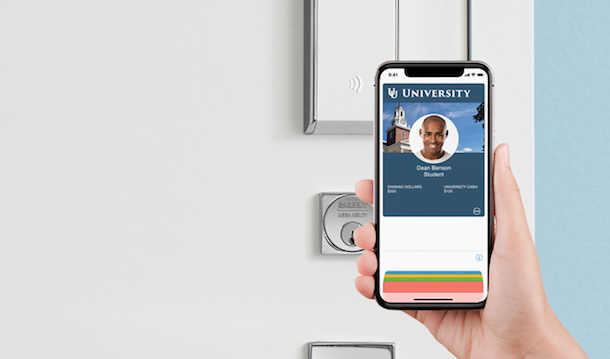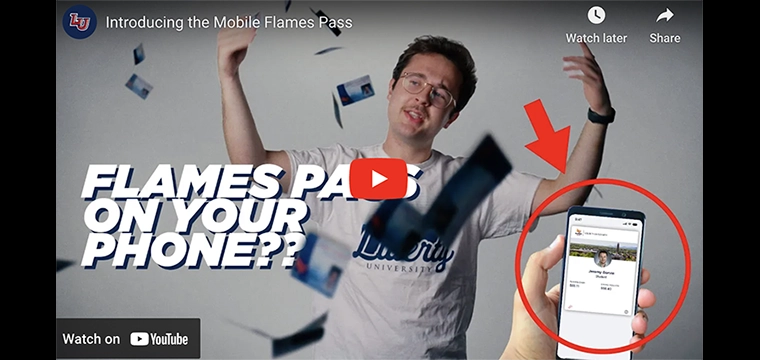
By Tyler Webb, Director of Sales, Campus EAC, ASSA ABLOY
These days, everyone seems to be talking about mobile credentials. The technology brings efficiencies for the campus, convenience for students, and security across the board. But it’s important that everyone is aware of all the potential challenges involved with their adoption.
So, I’d like to share some tips I have learned during my days deploying mobile credentials as the director of the Sooner Card program at the University of Oklahoma and from helping other campuses do the same in my position at ASSA ABLOY.
It is essential to understand your campus environment holistically. Too often, we lose sight of the big picture and focus on the things we see every day, like issuance, access control, and dining. But there are many, many more touchpoints for most programs.
I recommend creating a document that outlines where your cards are used today. Next to these uses, note the systems that are leveraging the technology. For example, one use area might be the residential room assignment during orientation, and the system would likely be the housing management system.
Across the areas you identify, you’ll need hardware to read the NFC or Bluetooth credential from the mobile phone. If you have already been rolling out modern readers to read contactless IDs, you may be partway down the road. Still, on every campus I have worked with, many readers required replacement or upgrade.
If you have already been rolling out modern readers to read contactless IDs, you may be partway down the road. Still, on every campus I have worked with, many readers required replacement or upgrade.
Next, examine the current situation as it relates to personnel. Do you have the resources to make a migration to mobile credentials possible? It will entail long hours and dedicated effort from your IT department, as well as your card office team and its leadership. You’ll want to ensure that it is a priority for everyone who needs to be involved to ensure that they are able to dedicate the time and resources necessary.
When you decide to make the leap to mobile credentials, there is a series of decisions you must make. Your choice of vendor may mandate some things for you, but similarly, your technology decisions could influence which vendors you choose as partners.
There are two distinct ways to get the credential information – such as the ID number – from the mobile phone to the reader. Near Field Communication (NFC) and Bluetooth Low Energy (BLE) are both wireless communication standards that transmit data through the air. NFC is more commonly used in the higher education market. It transmits over a shorter distance than Bluetooth, which is actually a benefit as it keeps the data within inches of the reader. It is also considered by many to be more secure. NFC also provides greater interoperability with other systems now and in the future, whereas BLE is used solely for access.
Your choice of vendor may mandate some things for you, but similarly, your technology decisions could influence which vendors you choose as partners.
The major transaction system providers offer a mobile credential solution. I recommend educating yourself on these offerings and how they differ. If you already work with a transaction system provider, start there and see what infrastructure, software, and institutional knowledge you already have in the proverbial bank.
Because life safety is the most crucial function of a campus ID, I always suggest talking to access control providers at the start of this process.
Technology options extend far beyond the wireless technology and the vendor selection. Be proactive and ask questions about credential provisioning, revocation, and encryption key ownership.
It is almost a cliché to say that you need executive level buy-in for a project to succeed in higher ed, but that doesn’t make it untrue. For a major technology initiative like mobile credentials – one that requires major commitment, staffing and financial resources – it is imperative.
I suggest starting with forward-thinking colleagues in IT, security, housing, and high-level administration. With support from within the various departments, it can be easier to get the okay from the department heads and the dean/provost. And don’t forget the students. They can be a major ally in the process.
Operating a mobile credential program is like running a business. You may not need to turn a hefty profit, but you do need to run efficiently and – especially if your office is a self-sustaining auxiliary – cover your costs. You also need funding to procure infrastructure and build the program.
Let’s assume your administration has approved the funding to launch the program (if not, there is no reason to proceed to these other tips). The first thing I ask card program directors is if they are ready to change roles and responsibilities – and potentially replace staff – as the need to print cards is reduced or eliminated.
Card offices traditionally cover a sizable part of their ongoing costs via lost card fees. In the mobile credential world, these fees go away. Get creative and explore ways to replace these fees with other revenue streams.
The nature of the work will change, so you and your team must change with it. If the workload diminishes, staff may have to be reallocated. If you have employees nearing retirement, you may be able to eliminate the positions and replace them with part-time student staff.
Many card offices traditionally covered a sizable part of their ongoing costs via lost card fees. In the mobile credential world, these fees go away. Get creative and explore ways to replace these fees with other revenue streams.
Additionally, as lost card fees do dry up, you will also incur an annual license fee for each person issued a mobile credential. In the past, a card issued as a freshman arrives to campus might last four or five years until graduation. After the initial cost of the card and its issuance, there were no more fees for that credential. Be prepared for this change to your program’s business model.
If you have made it to this point, give yourself a major pat on the back! But get ready for more work and late nights. I find that a well thought out launch plan is key to keeping things smooth in these final stages.
First, be sure to establish a realistic launch date. It is not realistic to pull off a project of this magnitude “over the summer break.” Take your time and do it right.
You may feel external pressure from constituencies on campus to launch ahead of some milestone event or date. You may also feel internal pressure to meet your own established timeline. Be certain that you are really prepared to hit the launch date, and if not, don’t be shy. Be transparent, make your concerns known, and hit reset.
Provide mobile credentials to students before they come to campus for the first time. With a little marketing, you can get mobile credentials onto student phones before they leave home. That is the beauty of over-the-air provisioning. They do not need to be in your office to receive their ID. The more you can issue ahead of time, the smoother the first days of the launch will be.
Test, retest, and test again. This includes all parts of your ecosystem. Look back at your initial outline of all the areas using your credential and let it guide your testing.
Test, retest, and test again. This includes all parts of your ecosystem. Look back at your initial outline of all the areas using your credential and let it guide your testing. Leverage a group of full-time employees and students as test subjects. In addition to providing real word feedback, they will become some of your greatest advocates, helping spread the word to others.
Have a defined, comprehensive marketing plan in place to make sure your populations know what is happening and why they should participate. Just because you build it does not mean they will come. Call on marketing professionals and staff, as well as students and your vendor partners to assist.
Manage expectations surrounding the launch. Participation levels may not be where you want them to be on day one, but with continued effort you will get there. Make sure that others on campus understand that the migration can be a slow roll, so don’t expect 100% enrollment on day one.
Check out the other installments in the “Tyler’s Tips” series:




